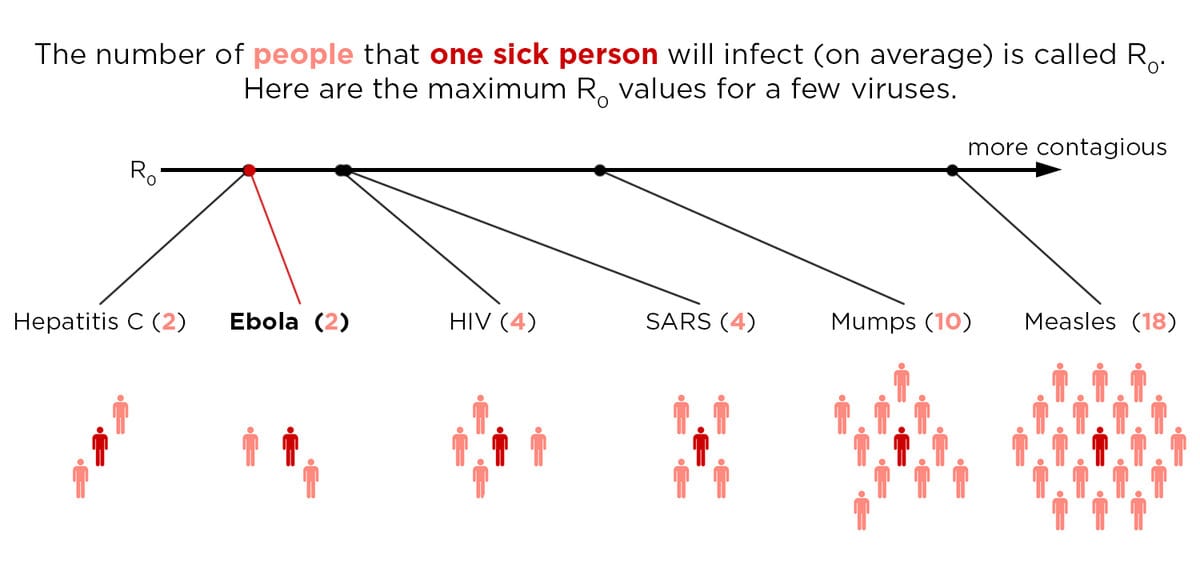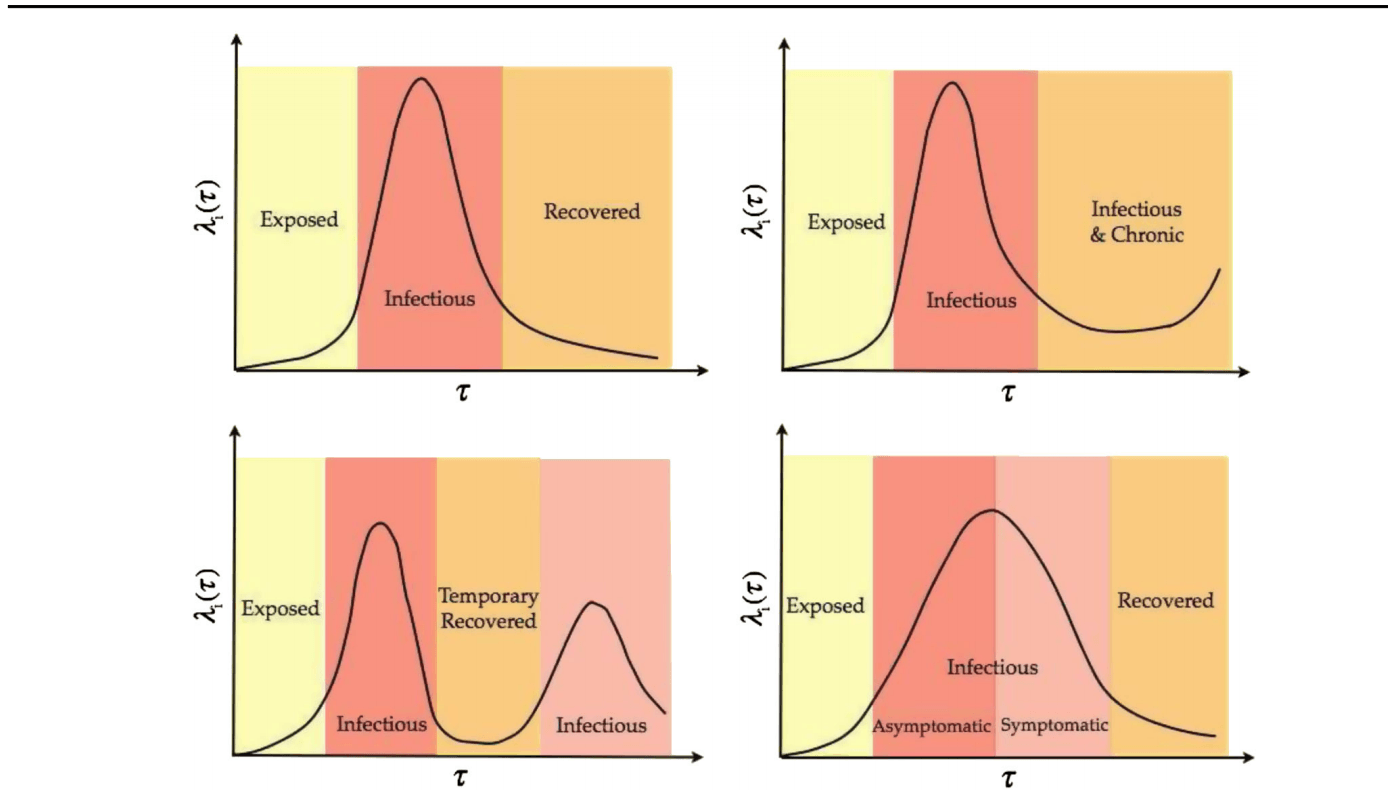How Contagious Is Ebola?
In 2014, when the Ebola epidemic reached the United States, NPR published a story about the contagiousness of Ebola compared to other pandemics. The number of people that a single person with Ebola is likely to infect, called the the Basic Reproduction Number or R0, was compared to that of Hepatitis C, HIV, SARS, Mumps, and Measles and displayed in the infographic below.
(Adam Cole/NPR, 2014)
Despite the public panic when the first case of Ebola was reported in the United States, health officials stayed “cool as cucumbers”, due to the relatively low R0 value. While the R0 value is above 1, which means the disease has the potential to continue indefinitely, it does not spread as rapidly as many other infectious diseases. In the case of Ebola, the R0 value is lower than some because it is harder to transmit than other diseases, needing close contact with body fluid to spread. Additionally, the period when a person is contagious is shorter than many other diseases.
The method for developing R0 values is not a straightforward process and new methods for calculation often emerge when new epidemics break out. The following graphs show the infectivity functions for various disease models. The top left graph shows the basic SIR model, which we covered in class. The top right graph depicts a chronic disease like HIV. The lower left graph displays a recurrent disease, like chicken pox, and the bottom right displays a flu type disease.
(Davoudi et al, 2012)
In the case of Ebola, a unimodal graph with the peak of the infectivity function occurring when the patient is symptomatic would be most accurate because people with Ebola are not contagious until they show symptoms. The fact that people are not contagious until after they are symptomatic is another reason why Ebola is unlikely to rapidly spread in areas with good public health systems because patients can limit contact with others when they start to show symptoms and decrease their contact with others (decreasing the k value in the formula we studied).
Davoudi, B., Miller, J. C., Meza, R., Meyers, L. A., Earn, D. J., & Pourbohloul, B. (2012). Early real-time estimation of the basic reproduction number of emerging infectious diseases. Physical Review X, 2(3), 031005.
Doucleff, Michaeleen. “No, Seriously, How Contagious Is Ebola?” NPR, NPR, 2 Oct. 2014, www.npr.org/sections/health-shots/2014/10/02/352983774/no-seriously-how-contagious-is-ebola.


